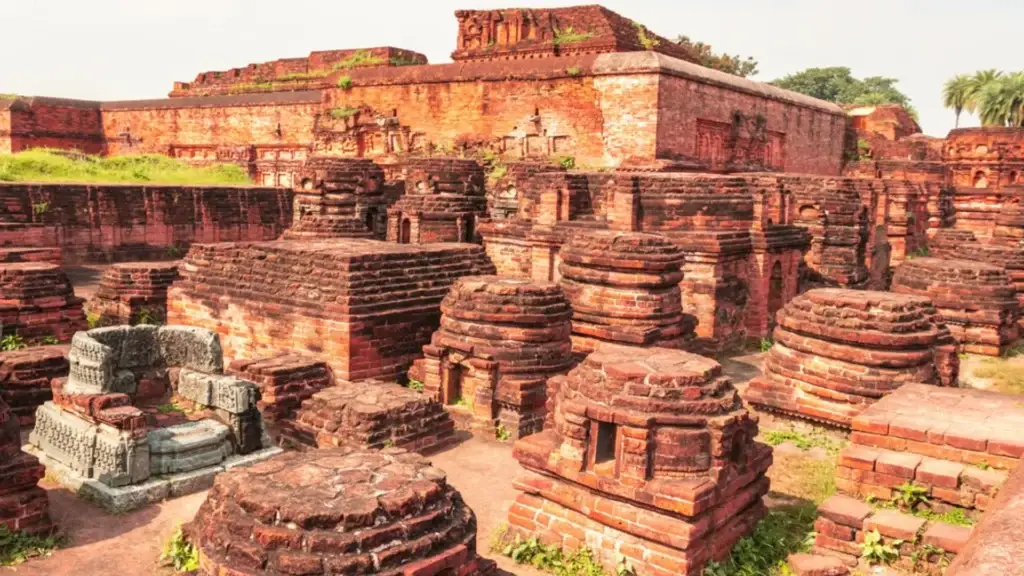The history of global education is incomplete without acknowledging the monumental contributions of ancient Indian institutions. Long before the rise of modern universities in the West, India was home to some of the world’s earliest and most sophisticated centers of learning. Among them, Nalanda University stands out as a shining beacon of intellectual pursuit, cultural exchange, and educational excellence. This blog explores how ancient Indian education systems, particularly Nalanda, shaped global learning and left an indelible mark on the world’s academic heritage.
The Foundation of Education in Ancient India
Vedic and Gurukul Systems
The earliest form of formal education in India dates back to the Vedic period (1500–500 BCE). During this time, the Gurukul system was prevalent, where students (shishyas) lived with their teacher (guru) in a forest hermitage or ashram. Education was holistic—encompassing spiritual knowledge, philosophy, mathematics, astronomy, grammar, logic, medicine, and martial arts.
Students were trained in:
Self-discipline (Tapasya)
Critical thinking (Tarka)
Ethics and morals (Dharma)
Debate and dialectics (Shastrartha)
This personalized, immersive, and moral-based education later formed the foundation of the grand universities that emerged in India.
Nalanda University: The Jewel of Ancient Learning

Birth and Flourishing of Nalanda
Established in the 5th century CE in present-day Bihar, Nalanda University was not just a center of Buddhist learning but an international institution that attracted scholars from across Asia, the Middle East, and even Greece.
At its height:
Over 10,000 students and 2,000 teachers lived on campus.
It had a nine-story library (Dharmaganja) housing thousands of manuscripts.
Scholars from China, Korea, Japan, Sri Lanka, Tibet, and Central Asia studied here.
Subjects taught included Buddhism, medicine, logic, mathematics, grammar, astrology, metaphysics, and art.
Nalanda was truly a multidisciplinary and multicultural academic institution, unparalleled in the ancient world.
Chinese Scholar Xuanzang’s Accounts
The most vivid descriptions of Nalanda come from the Chinese pilgrim Xuanzang (Hsüan-tsang), who studied there in the 7th century CE. He praised Nalanda for:
Rigorous intellectual debates
Exemplary discipline among monks and students
Advanced curriculum
A peaceful environment conducive to learning
Xuanzang’s records provide proof of global admiration for Nalanda and demonstrate how India was considered a knowledge superpower.
Influence on Global Learning and Knowledge Exchange
Cross-Cultural Knowledge Transfer
Nalanda played a vital role in disseminating Indian philosophies, sciences, and medicine across Asia:
Buddhist texts and teachings were translated and carried to China, Korea, and Japan.
Ayurveda and Indian mathematics influenced systems in the Arab world.
Debate techniques and dialectics taught at Nalanda inspired scholars in Tibet and Mongolia.
These contributions preceded the Islamic Golden Age and the European Renaissance, offering a glimpse into India’s intellectual influence on the world.
Intellectual Freedom and Academic Diversity
Unlike modern institutions limited by strict curricula, Nalanda encouraged:
Open debates among scholars of different schools
Freedom to challenge even the most established doctrines
Interdisciplinary learning, blending religion with science and philosophy
This environment fostered innovation, critical inquiry, and academic tolerance, values that remain central to modern education.
Other Ancient Centers: Takshashila and Vikramashila

Takshashila (Taxila)
Predating Nalanda by several centuries, Takshashila (6th century BCE), located in present-day Pakistan, was one of the earliest global universities. Here, luminaries like Chanakya (Kautilya) and Panini studied and taught.
Subjects included:
Politics and Economics (Arthashastra)
Grammar and Linguistics (Ashtadhyayi)
Surgery and Medicine (Sushruta Samhita)
Takshashila attracted students from faraway lands, including Babylon, Greece, and Persia, proving that India was an international education hub even in ancient times.
Vikramashila University
Founded in the 8th century CE by King Dharmapala, Vikramashila was another major Buddhist learning center, focusing on Tantric Buddhism and advanced philosophy.
It worked in tandem with Nalanda, often exchanging scholars and manuscripts, and maintained global relations with Tibetan and East Asian monks.
Teaching Methodologies Ahead of Their Time
The ancient Indian education system was centuries ahead in terms of pedagogy and student development:
Oral Tradition and Memorization: Helped in retention and mental development
Discussion and Debate (Socratic style): Preceded Western methods by centuries
Case Studies and Practical Learning: Especially in medicine and astrology
Moral and Ethical Education: Emphasized values, not just skills
The teacher-student relationship was sacred, fostering lifelong respect, discipline, and character-building.
Role of Education in Social and Cultural Fabric
In ancient India, education was not limited to career building. It was considered the path to liberation (moksha). Students were taught to:
Seek truth (Satya)
Live righteously (Dharma)
Contribute to society (Seva)
Even women and marginalized groups had access to education in many periods, especially in Buddhist monasteries, showcasing India’s inclusive vision of knowledge.
Destruction and Decline: A Setback to Global Learning
Nalanda’s Tragic Demise
In 1193 CE, Bakhtiyar Khilji, a Turkic invader, set fire to Nalanda, destroying:
Thousands of manuscripts and scriptures
Buildings that had stood for centuries
A vast pool of knowledge accumulated over 700 years
It’s said that Nalanda’s library burned for months, a tragic symbol of how knowledge lost can stall progress for generations.
This marked a sharp decline in India’s global academic standing, although its teachings had already spread far and wide.
Revival and Legacy in the Modern World
Resurgence of Nalanda University
In 2010, the Indian government initiated a revival of Nalanda University as a modern international institution. Today, it focuses on:
Historical and Buddhist Studies
Sustainable Development
Philosophy and Ecology
International Relations
This is a powerful symbol of cultural pride and academic resurgence, aligning ancient wisdom with modern goals.
Enduring Global Impact
Modern scholars and institutions continue to explore:
Indian logic systems (Nyaya)
Mathematical contributions like zero and decimal
Ayurveda and Yoga
Indian philosophical concepts like Dharma and Karma
From Harvard to Kyoto, global universities are incorporating Indian educational philosophies into their curriculum, proving that ancient India’s intellectual spirit still guides and inspires global learning.
Lessons for Modern Education
The ancient Indian education system teaches us valuable lessons:
| Ancient Wisdom | Modern Relevance |
|---|---|
| Holistic Education | Integrating ethics, arts, and sciences |
| Gurukul Bond | Personalized mentorship |
| Interdisciplinary Learning | Breaking academic silos |
| Focus on Debate | Critical thinking over rote learning |
| Inclusive and Moral-Based Learning | Character development alongside knowledge |
Modern institutions can adapt these principles to build compassionate, innovative, and globally responsible citizens.
My Opinion
The story of Nalanda and ancient Indian education is not just a tale of the past—it’s a blueprint for the future. At a time when the world is rediscovering the importance of integrative learning, cross-cultural exchange, and moral grounding, revisiting India’s educational legacy offers deep insights and timeless wisdom.
Let Nalanda remind us that education is not just a means to a career, but a sacred journey to awaken human potential and contribute to the betterment of the world.
Related posts:
 Nehru to Modi: How Indian Prime Ministers Have Shaped the Nation
Nehru to Modi: How Indian Prime Ministers Have Shaped the Nation
 Yoga for a Stress-Free Life: An Ancient Solution for Modern Lifestyle
Yoga for a Stress-Free Life: An Ancient Solution for Modern Lifestyle
 Dynamic Memory Methods: Boost Your Memory & Learning Skills
Dynamic Memory Methods: Boost Your Memory & Learning Skills
 The Role of Chandra Shekhar Azad in Indian Independence
The Role of Chandra Shekhar Azad in Indian Independence
 International Day Against Drug Abuse and Illicit Trafficking: A Global Fight for a Drug-Free World
International Day Against Drug Abuse and Illicit Trafficking: A Global Fight for a Drug-Free World
 The Rise of Skill-Based Learning: Is It Replacing Degrees?
The Rise of Skill-Based Learning: Is It Replacing Degrees?
